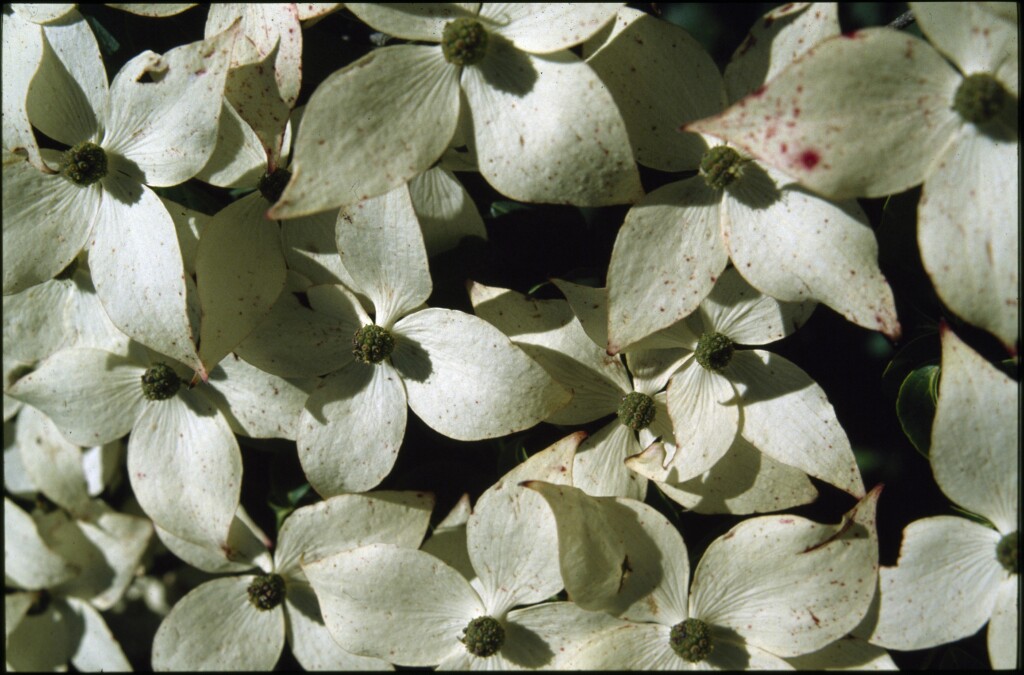Cornus capitata
Wall. Himalayan Strawberry-treeSmall evergreen (at least in Victoria) tree to c. 15 m high; young branches covered with short, stiff, appressed, medifixed hairs. Leaves oblong to elliptic, 4–12 cm long, 1–4.5 cm wide, apex acute, base tapering, margins entire, both surfaces covered with minute appressed medifixed hairs, lower surface pale, glaucous; main veins elevated below, sometimes pinkish, domatia present; petiole c. 1 cm long. Inflorescences solitary, many-flowered, hemispherical, 1–1.5 cm across; bracts usually 4, ovate-obovate, 2.5–4.5 cm long, 1.5–3 cm wide, coriaceous, yellow. Flowers very small, greenish-yellow, sessile; sepals obtuse, erect, ultimately deciduous, calyx tube cylindric, pubescent; petals oblong, cuneate, c. 2 mm long, spreading, slightly keeled above. Drupes coalesced into a succulent, globular, strawberry-like head 2.5–5 cm across, yellow to red, each drupe with a hard 1-seeded stone.
GipP, HSF, HNF. Native to the southern Himalayas (e.g. India, China, Nepal, Bhutan). Recorded as naturalised in Sherbrooke Forest in the Dandenong Ranges, and near Mt Beauty, favouring moist montane forests. Flowers mainly Dec. Fruits Apr.-May.
The fruits are edible, undoubtedly resulting in the spread of seed by birds.
Jeanes, J.A. (1999). Cornaceae. In: Walsh, N.G.; Entwisle, T.J., Flora of Victoria Vol. 4, Cornaceae to Asteraceae, pp. 23–24. Inkata Press, Melbourne.
 Spinning
Spinning

